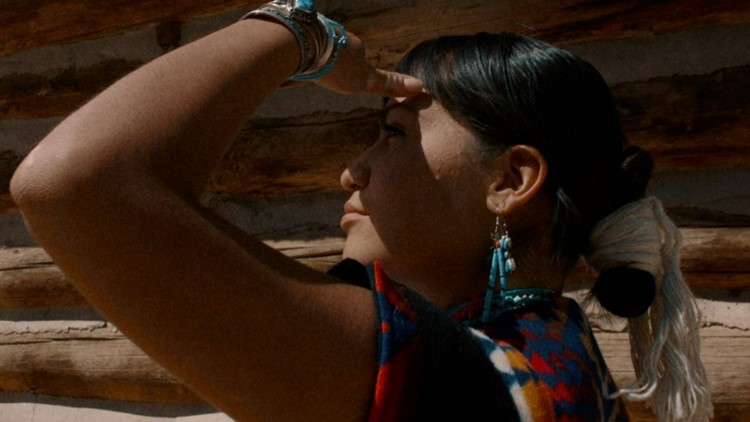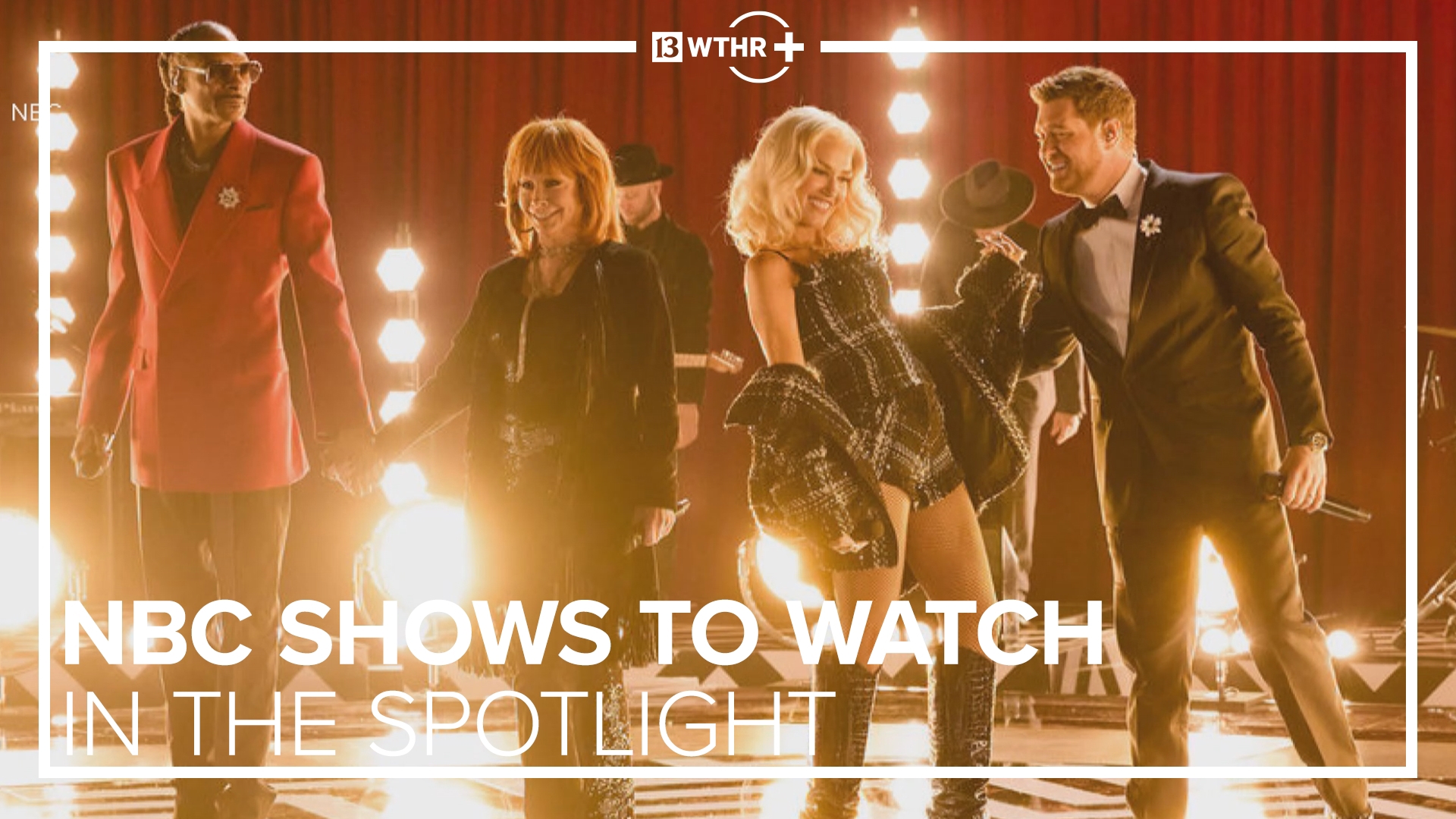BOISE, Idaho — Kymon Greyhorse is screenwriter, editor and film director. He is also Navajo, Tongan and was a 2022 Sundance Indigenous Fellow. His short film "I Am Home" was shown at the 2023 Sundance Film Festival and will be shown at Filmfort, a part of Treefort, at The Flicks on Saturday, March 25 at 2:45 p.m.
"My career goals are to demolish expectations and propel our stories to the top," Greyhorse said. "I am a believer that BIPOC stories need to be told by BIPOC, no compromising necessary. I always want my work to empower and inspire yearning voices that have been silenced for too long. To create space and community of like-minded people that are willing to do the work to create change and speak of the taboo."
"I Am Home" is described as; "A poetic memoir, a love letter that speaks of introspection and what it means to rediscover who you are and cherish where you come from."
Greyhorse said that he wrote the film with the intent for the watcher to "feel the love, inspiration, energy, and empowerment that went into this film and only that."


Full interview below:
Please explain how you became interested in making films. In your bio it states that your work, “explores the human experience normalizing Indigenous existence.” Can you please explain that.
Greyhorse: Movies and TV shows were always by my side, becoming my best friend at times when I feared and questioned who I was and what I was supposed to be. They were a comforting hug that helped me navigate inner turmoil and complications in my life. When I turned eight my Mom gifted me my first Panasonic camcorder with pause and resume capabilities. I mimicked what I saw in those movies and edited them just the same. Gathering my family after finishing a short film with my cousins, I watched my family's reactions and excitement. I loved it. Movies in my life often became a safe space for validation, reconnection, and understanding through the many stages and obstacles in my life. I want to thank my Dad for igniting my passion for filmmaking and allowing me to recognize the comfort, love, acceptance, and support that can come from it.
You are a Two Spirit artist, can you please explain that to people?
Greyhorse: Two Spirit refers to a person who embodies both masculine and feminine energy. In Navajo we have four genders: feminine woman, masculine man, feminine man, and masculine woman. Before colonization Two Spirit individuals existed in our communities and were held in high places of honor, seen as equals, being healers and warriors. They still exist today among different Indigenous tribes across Turtle Island, aka continental US, all with different terms and duties among the people. We are working to revitalize these traditions and decolonize the hateful teachings from white settlement.
How did you come up with the idea for this short film? And can you explain it a bit please, like the rediscovery of self?
Greyhorse: This film actually started as a poem back in August of 2021 right in the middle of the pandemic. At this point in my life I had been staying home, isolated away from family and friends. I hadn’t gone out and filmed anything in over a year, I was still in college virtually. When you are secluded by yourself for a long amount of time you begin to think about purpose and reflect on who you are as a person in this huge world. This is where my inspiration came from. I wanted to honor the matriarchal figures in my life that raised me to see the love, beauty and strength within myself and all those who came before me. I began to think of what home meant to me. Home is a balance. It’s a place where you feel love, growth, energy, and wonder. But it is also a place where you can feel lost, lonely, and isolated. I wanted to speak about colonization and the passing of time in a subtle and nuanced way. I wanted to shine a light on how our people have adapted and evolved over time, and the beauty and empowerment of that.
I wanted the film to be in our language (Diné Bizaad). It was only right to do so. I reached out to my Grandma Betty because I felt that the wisdom in her voice could carry a message far beyond just the poem itself. Screening at Sundance Film Festival 2023 it was surreal to see my film in front of so many Non-Natives. My Grandma Betty had her moment in Park City, UT. A moment where everyone will listen to her speak in her Native tongue and listen to the elegance and beauty of it. I felt that I did my Ancestors proud.
The film was shot it in one day. That is hard to believe, how hard was that?
Greyhorse: I cannot believe it either. Once I finished the poem and mood board of this idea in my head, I reached out to a good friend of mine, Tiara Folsom (subject in film). I explained to her the visuals that popped into my head and the impact I wanted this poem to have. I told her of playing with this idea of seeing this woman transform from traditional regalia to modern contemporary clothing, and she was excited. It was challenging finding a traditional style Hogan. I called family / family friends and emailed my chapter house and anyone all over the Navajo rez asking if they knew someone who had one. I ended up calling the Navajo Nation Zoo where they had it. Tiara and I planned a one-day trip down to Window Rock, AZ. I was incredibly nervous because I didn’t have a shot list. I remembered I came across this image of a Navajo woman sitting in front of a traditional style Hogan looking straight into the camera. I remembered how it made me feel when I first saw it and I had to recreate it somewhere in this film. It was truly a candid and unforgettable experience where I drew inspiration on the spot and used my own camera to capture her beauty.
What are you working on now?
Greyhorse: I am working on new drafts for my first feature length film. A thriller/drama about a woman named Lani who attends the funeral of her father after 11 years of not speaking. Feeling isolated and alienated among her relatives she soon discovers that her fathers death was no accident. It’s a journey of yearning and survival and righting wrongs. I want to challenge myself this year and work towards directing my first feature and diving into my Polynesian roots and starting that healing journey. Please look forward to my future!
How important is it to have representation in film, and how much of a lack do you see or misrepresentation?… Is it progressing?
Greyhorse: As a filmmaker it’s important to acknowledge all forms of media that add to the realization of Indigenous people. In the film industry we are in an era where BIPOC stories are now shifting to be a priority, something that is long overdue. I believe I came into film at a time where the spotlight is slowly making its way to people who look like me. But sometimes we cannot wait for the spotlight to make its way, but instead create and control our own spotlight where we don’t have to depend on a system that once wanted us erased from the Earth, or even worse, mocked us and provided a false narrative to the world from a Non-Native perspective. I think the impact of Native cinema and media is barely starting. I think we are in a time where there is agency and freedom in storytelling in a way that it wasn’t before. And doing so from our own perspectives and experiences. There’s not enough stories out there that allow this empowerment and opportunity so, to see things transform and shift us forward is beautiful. I cannot wait to see an industry filled with Natives in writers rooms, in front and behind the camera. It’s our time.
Watch more Local News:
See the latest news from around the Treasure Valley and the Gem State in our YouTube playlist:



